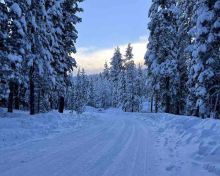
Winter is an exciting season in the Tahoe-Truckee region. Despite the colder temperatures and shorter daylight hours, the mountains come to life as fresh snowfall blankets the landscape. Endless opportunities for skiing, snowboarding, sledding, skating, and après events arise, and locals and visitors alike are inspired and invigorated to enjoy the season to the fullest.
However, the dramatic drop in temperatures and increase in snowstorms bring a multitude of risks and hazards. Weather often is unpredictable and can change rapidly. Highways can become icy or covered in snow, causing spin-outs and collisions. Visibility can be reduced from fog and snow. Major highways can close due to accidents, dangerous conditions and necessary road work. It's important to be aware of all of the problems that can arise so you can be prepared to be safe in any situation that comes your way.
Below, I have created a list of five tips to help you be safe on the road and make the best of your winter adventures.
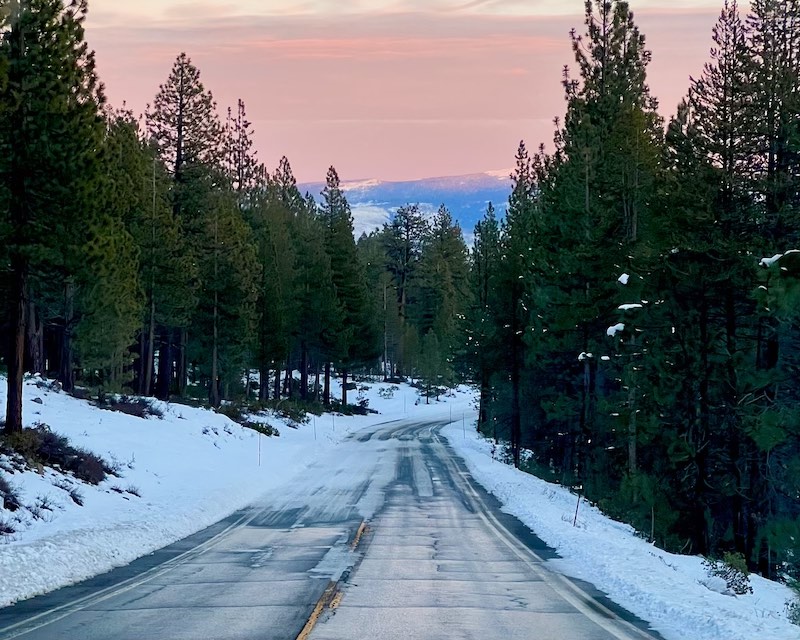
Being prepared to drive on icy conditions is essential to your safety. Photo Credit: Kirsten Alexis
1. Winterize Your Car
Before you even plan to hit the road, it’s important to make sure that your car is properly prepared to handle unpredictable conditions and run safely. Below, I have created a checklist for you to help get your car ready.
-
Go through an initial check-through of your car, including brakes, battery, windshield wipers, heat and cooling systems, oil and fluids. You can also take your car in for a full inspection by professionals to ensure everything is inspected properly.
-
Inspect your tires to make sure the tread depth is ideal and that they are fully inflated.
-
Have a set of chains in your car in case the road conditions become too hazardous.
-
Have an ice scraper and broom to get ice and snow off, and a shovel in case your car is surrounded by snow.
-
Pack an emergency kit (see below) with water, food, first aid, blankets, extra layers and hand warmers in case you get stuck on the road.
2. Plan Ahead for Your Trip
It’s a great idea to check conditions before you go, but also be prepared should the weather suddenly and unexpectedly change. I personally always advise people to leave as early as possible, especially if the weather and road conditions looks promising. During the winter season, holidays and weekends tend to get very busy, and traffic can get congested and sometimes halt to a standstill.
Always have enough gas and fill up periodically should weather change and the roads become closed or there is a detour. Know where the gas stations are as well as chain control checkpoints, restaurants and hotels. Having backup plans and points of interest on your map will always come in handy.
You can also check the Caltrans Highway Information Network (CHIN) for up-to-date information.
3. Carry Chains
It’s essential that you always carry chains with you, even if the forecast looks promising. And even if you think you have the proper tires needed to tackle the road conditions.
A common misconception is that a car with winter tires, AWD or 4WD won’t need to carry chains. But when conditions get too dangerous, and an R3 chain requirement is announced, all vehicles on the road must have chains to pass the checkpoint. There are no exceptions.
Make sure the chains you have are properly fitted to your tires. If you do need to install chains, do it after you have pulled off to the side of the road. Sometimes there will be installers to assist you, but it is necessary to know how to do it on your own in case there is nobody to help. After you have passed the chain control area, make sure to pull off again safely to remove them.
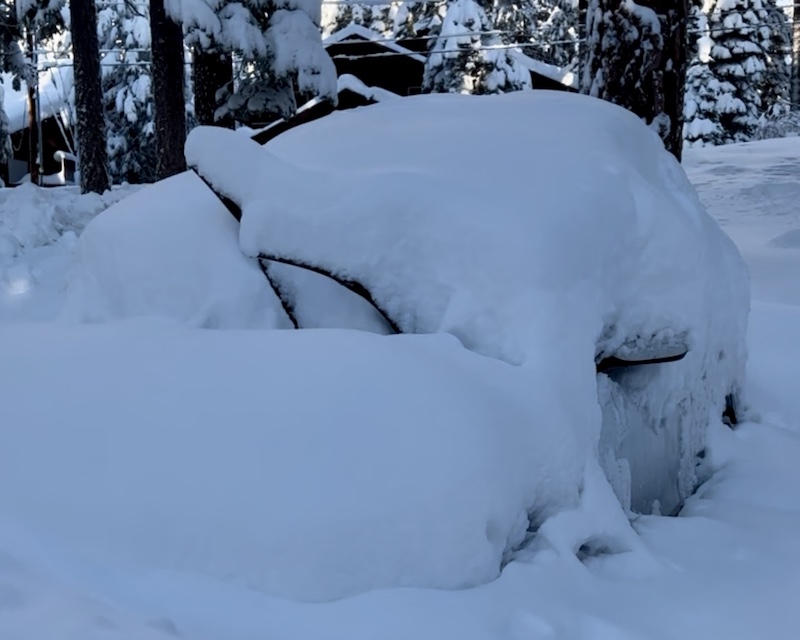
Make sure to have a shovel, ice scraper and broom to get your car ready after a snowfall! Photo Credit: Kirsten Alexis
4. Practice Safe Driving Habits
Not only do you have to watch the road carefully for changing conditions and potential hazards, but you have to be aware of other drivers as well. Icy roads can cause cars to suddenly spin out, and it is a lot more difficult to slow down or swerve to avoid them. Accidents can occur frequently, and it is essential to be aware and mindful of your driving habits.
When the roads are icy or covered in snow, slow down and keep a safe distance from other drivers should you or others spin out. If you do find yourself losing control, don’t make any sudden movements or overcorrect.
Keep your headlights on so oncoming traffic can see you. Visibility can be very poor during snowfall or fog, so it’s important to let other drivers know where you are.
And make sure to completely clear your car of snow and ice before you drive.
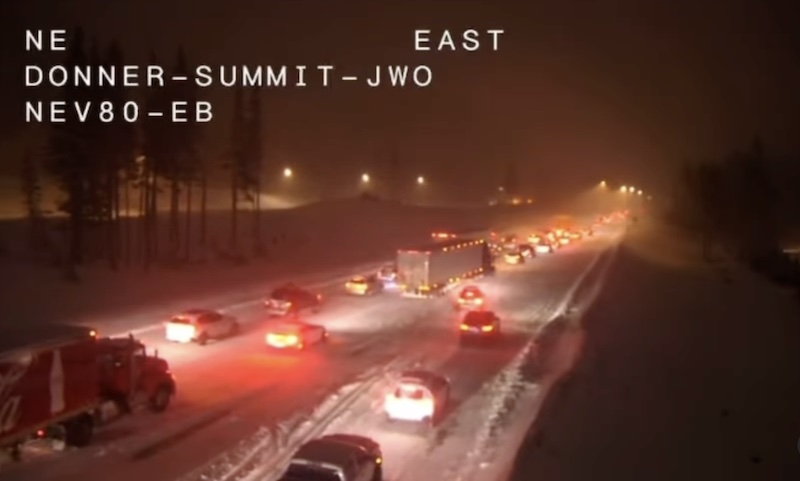
Winter traffic doesn't always go as planned. Being prepared is essential. Photo Credit: @CHP_Truckee and CalTrans
5. Prepare an Emergency kit
Having an emergency kit in your car will not only help you should an unexpected situation arise, such as road closures, but it will also give you peace of mind for your trip knowing that you have items to keep you safe. Here's what you should have in an emergency kit to keep in your car.
-
Have at least a gallon of water for each passenger
-
Have a few non-perishable meals. I like to use camping food that you can add boiled water too. However, you can also bring protein bars, granola, nuts or jerky.
-
Bring blankets, gloves and extra layers to keep you warm. Handwarmers are also great to have.
-
Have at least one flashlight and batteries.
-
Bring an extra cell phone charger and charged solar charger.
-
Have a first aid kit and extra medications.
-
Have jumper cables and a tire repair kit. I also suggest adding flares or reflective devices to warn oncoming traffic.
I hope you found these tips helpful and enjoy the winter season to the fullest!
For more information click here.

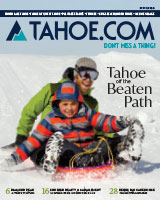
 Kirsten is an outdoor adventure enthusiast, writer and photographer. You can typically find her hiking, paddleboarding, cross-country skiing and checking out new spots to share in the Tahoe Donner region. She has been lucky to call Tahoe her second home since she was a child and aims to inspire people to experience Tahoe and fall in love with the beauty and adventurous spirit of the region through her blogs and content.
Kirsten is an outdoor adventure enthusiast, writer and photographer. You can typically find her hiking, paddleboarding, cross-country skiing and checking out new spots to share in the Tahoe Donner region. She has been lucky to call Tahoe her second home since she was a child and aims to inspire people to experience Tahoe and fall in love with the beauty and adventurous spirit of the region through her blogs and content. 






